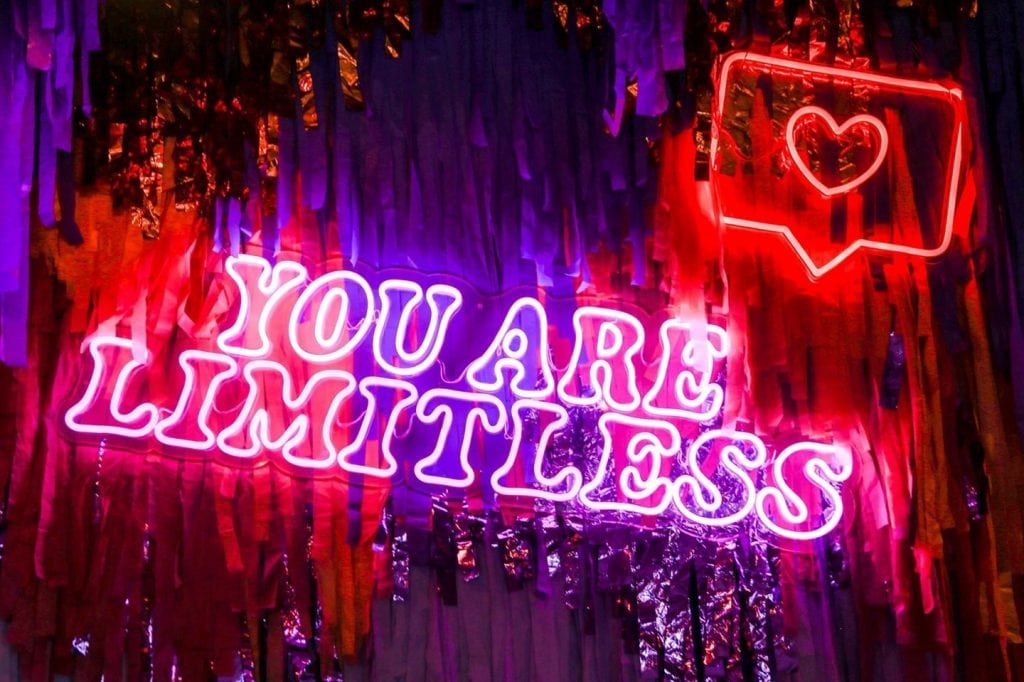There are many myths and misunderstandings about neon signs, despite the fact that they have been used for marketing and adornment for well over a century. Neon signs have been criticised for what they see as their negative effects on the environment, high maintenance costs, and high operating costs.
Some people believe they are only useful for industrial settings, while others worry that they are too cumbersome or complicated to install.
These misconceptions, however, are not correct. Because of their durability, versatility, and recyclability, neon signs are increasingly being used in residential, commercial, and even artistic settings. In this piece, we'll examine some of the most widely held misunderstandings regarding neon signs and dig at the reality behind them.
Myth 1: A Neon Sign Is Harmful To One's Health
Many people mistakenly believe that neon signs are hazardous because of the chemicals and gases used to create their distinctive colour and detail. But this is not the case. Both neon and argon gas are used in the creation of neon signs. Because these gases are naturally occuring in the air we breathe, there is no danger to human health.
However, there may be traces of mercury vapour in some argon tubes (used in neon signmaking).
However, the fluorescent bulbs you use in your house also contain mercury. There is no evidence that short-term exposure to mercury is detrimental. This is something to worry about just if the lights or signs stop working.
If these are the sorts of things that give you pause when contemplating neon signs, you can rest assured that you have nothing to worry about.
Myth 2: Neon Signs Can Harm The Environment
People also believe that neon signs are not the greatest for the environment for the same reasons that people believe that fluorescent lights are not the best. One more time, the neon gas does not pose any danger to the surrounding ecosystem.
It is a non-toxic component that does not result in any damage to the environment.
In addition, everything that you see in a neon sign is recyclable, even the neon itself. This contains both the glass and the gas contained within it.
In contrast to other types of light sources, it uses far less power, which is one of the ways it helps the environment. The majority of neon signs have an illuminating capacity of less than one hundred watts, which is somewhat more than the typical household lightbulb.
Myth 3: Touching Neon Signs Can Cause Electrical Shocks
It is true that older neon signs have the potential to frighten people, but that time has passed.
Different processes are used to make neon signs in modern times. At this point in time, there are legal laws in place that mandate neon signs to feature over-voltage protection or ground fault interrupts, making them safe to touch and use. In order to remain in accordance with the law, it is imperative that your neon signs adhere to certain rules.
Myth 4: Led Signage Is Superior In Every Way
When it comes to brilliant storefront displays, LED signage is the standard, but it has its flaws. LED signs, which include thousands of individual diodes, have their own inherent brightness constraints. A sign's brightness could decrease if a bulb burns out or is broken. If your LED sign is dim, it may be time for an upgrade.
Neon signs have the advantage of being seen from any direction, allowing for more creative freedom in terms of sign design and colour palette.
Myth 5: Neon Signs Aren't As Bright Or Versatile As Other Signs

Even though many people insist on using LED signage because of its superior brightness and durability, the reality remains that these signs are not completely impenetrable.
LEDs are susceptible to losing their brightness over time in the same way that other types of lighting are. This is primarily attributable to the fact that they rely on thousands of small tiny bulbs on the front, and sometimes on the back and sides as well.
When these bulbs burn out, the signs are expected to become less bright in certain areas, which will eventually make it necessary to replace them totally.
In the case of neon tubes, these one-of-a-kind types of illumination do in fact emit light in all 360 degrees, which indicates that they may be observed and appreciated from any angle.
In addition, neon signs may display over forty unique colours, although most lit signage typically gives just about eight various tones to choose from.
Myth 6: Neon Signs Are Fragile And Dont Last Long
Critics of neon signs are eager to point out their purported short lifespan, however this is more of an aesthetic preference than an actual problem with the signs themselves.
To be sure, some lights are not designed to survive extreme conditions, but it is important to remember that all lighting is vulnerable if not properly maintained. Annealing neon signs makes the glass more flexible, which reduces stress fractures and makes the signs more durable.
Furthermore, it has been said that the average neon sign only lasts between 20,000 and 30,000 hours. Well-made signage proves the opposite to be true. Many professionally made neon signs have been in continuous use for over a decade with no evidence of wear and tear, despite being on for 24 hours a day, seven days a week.
Myth 7: Because Neon Signs Are High Voltage, They Are Dangerous
Even though the neon signs are normally powered by an electronic convertor that operates at 8,000 volts (which is also known as transformers), the convertors that we use are self-calibrating, so they only apply the amount of voltage that is required to keep the neon sign lit.
For instance, out of the total of 8,000 volts that are available, the neon sign may just require 6,000 of those volts. Although this remains a high voltage, the currents only amount to 20 milliamperes.
The transformers and convertors that come with neon signs are equipped with open circuit as well as earth leakage protection. This means that if the neon tube breaks, the power will be switched off instantly, and there will be no danger of electrocution as a result.
Myth 8: Neon Tubes Get Extremely Hot
Neon lights are cool to the touch at all times. For one thing, they look just like standard light bulbs. Neon bulbs, like traditional incandescent ones, contain a red and a blue-emitting filament. Neon lights have two filaments, and when turned on, both of them light up. This keeps the surface of the neon tube from overheating.
A side benefit of this layout is that it keeps neon signs from getting too hot to handle. It keeps them from getting too hot, too. LED neon lights, which cost about the same as traditional neon lights but generate 85% less heat, are another option to consider.
In order to prevent injuries, neon signs are made to only feel warm to the touch. The neon signs don't get hot on the outside. The area through which the current flows instead becomes heated. Each neon tube has an electrode at one end, so electricity can flow only in one direction through the network.
The prolonged use of neon signs will cause this road to become dangerously hot. A "sleeve-like" design is used by certain manufacturers to protect the electrodes from wear and tear; this design often consists of a rubber or silicone cap. You can safely perform any necessary maintenance or repairs on the signage as quickly as you unplug it.
Myth 9: Led Signage Is Brighter And More Durable Than Neon Signs
The initial brightness of LED signs is most likely higher than that of neon signs; nevertheless, in our experience, the brightness of LED signs decreases over time, whereas the brightness of neon signs is maintained for many years. Because LED signs are constructed from a large number of very small individual bulbs, if any one of these bulbs burns out, the LED sign develops dark areas across its surface, and eventually the entire sign will need to be changed.
Because neon tubes are round in shape, the light that they produce may be seen from any angle. The available LED replacements to neon only illuminate the front, one half of each side, and occasionally the back. Neon lights illuminate the entire surface.
Myth 10: Neon Is Glass And Less Durable Than Led Alternatives
Neon's longevity was already mentioned, but if you're worried about your design being too complicated, consider that Neon tubes may be as small as 8mm in diameter, and a competent glass bender can use this to create elaborate designs with text as small as 45mm high, depending on the font type. With an 8mm stroke width and a rounded face, LED neon signs are a viable alternative to traditional neon signs, but only for designs that are sufficiently large.
If there was a hole or fracture in a neon tube, air would leak in and the lamp would gradually die and need to be replaced since air kills the lamp's ability to function. However, neon tubes don't really leak the gas put in them.

In the same way that LEDs degrade over time, so do coloured neon tubes, however the rate of degeneration may vary from one colour to the next. This, however, is typically not visible until the tube's expected lifespan is nearly over.
However, a pure Neon segment retains the same level of illumination at the time it was installed, with the exception of external environmental influences on the glass. If the electrodes on a segment of pure Neon fail, the section can be re-pumped and used again.
When a tube is so severely damaged that it must be replaced entirely, it is possible to produce new sections for it at a cheap cost and in as little as an hour, getting it back to you as soon as possible at a price that is competitive with or even lower than the cost of a replacement.
Myth 11: For Neon Sign Installations, A Fireman's Switch Is Required
It is only necessary to install a fireman's switch when a neon sign is hard wired into the mains power or when the neon is intended for permanent usage and produces more than 100 watts of illumination. The usage of a fireman's switch in conjunction with a neon sign is required by a number of show venues; however, this is not a necessity imposed by any applicable laws; rather, it is merely a rule that the exhibition venues choose to impose within their facilities.
Should You Invest In Neon Signs?
Numerous criteria, including a company's target audience, location, and budget, determine whether or not neon signs are worthwhile. Some things to think about while considering whether or not a neon sign is a good investment for your company are as follows:
- A neon sign is a great method to get your business noticed if it is situated on a busy street or other location with a lot of foot traffic.
- A neon sign can be an effective tool for increasing brand recognition and strengthening your company's identity.
- Neon signs may be produced in a broad variety of shapes, sizes, and colours, making them versatile and adaptable if you need a sign that is exclusive to your business.
- Longevity: Neon signs can last for a long time, making them a good value in the long run.
- Neon signs are often more expensive than other types of signage, so make sure you have enough money set aside before purchasing one.
- The versatility of neon signs lies in their ability to serve a wide range of functions, from advertising and decoration to self-expression and even art.
- Conserving energy: compared to its incandescent counterparts, neon signs consume significantly less power.
To sum up, neon signs can be a good investment for a company that wants to stand out from the crowd, strengthen its brand, and give customers something they won't forget. Before making a choice, it's wise to weigh the pros and drawbacks, including the budget, location, intended audience, and end aim.
Conclusion
Neon signs are the subject of numerous misconceptions and urban legends.
More and more homes, businesses, and galleries are incorporating neon signs into their decor. Neon signs contain no nonrecyclable materials.
The environment is safe from neon gas's presence. Since neon signs can be seen from any angle, they offer greater flexibility in terms of sign layout and colour scheme.
Most neon signs use less than a hundred watts of electricity to illuminate their displays, which is slightly more than the average incandescent bulb. Even though neon signs can show over forty colours, most illuminated signs only show about eight.
By increasing the glass's flexibility through annealing, stress fractures in neon signs are lessened and their longevity is increased. There is little to no visible wear and tear on many professionally made neon signs that have been in use for more than ten years.
LED neon signs can be used instead of conventional neon signs if the design is big enough.
A skilled glass bender can use neon tubes as small as 8mm in diameter to make elaborate designs with text as tall as 45mm. Except for the effects of the environment on the glass, the brightness of a pure neon segment will remain the same for as long as it has been in place.
Pure Neon can be re-used even if its electrodes fail because the gas can be re-pumped.
Neon signs are a great way to get your name out there and solidify the identity of your business. Neon signs can be used for anything from commercial advertising and interior decoration to personal expression and even as works of art. Make sure you have enough money saved up to buy a neon sign, as they tend to be more costly than other types of advertising billboards.
Content Summary
- There are many myths and misunderstandings about neon signs, despite the fact that they have been used for marketing and adornment for well over a century.
- Neon signs have been criticised for what they see as their negative effects on the environment, high maintenance costs, and high operating costs.
- Because of their durability, versatility, and recyclability, neon signs are increasingly being used in residential, commercial, and even artistic settings.
- In this piece, we'll examine some of the most widely held misunderstandings regarding neon signs and dig at the reality behind them.
- In order to remain in accordance with the law, it is imperative that your neon signs adhere to certain rules.
- If your LED sign is dim, it may be time for an upgrade.
- Even though many people insist on using LED signage because of its superior brightness and durability, the reality remains that these signs are not completely impenetrable.
- LEDs are susceptible to losing their brightness over time in the same way that other types of lighting are.
- The transformers and convertors that come with neon signs are equipped with open circuit as well as earth leakage protection.
- Neon lights are cool to the touch at all times.
- LED neon lights, which cost about the same as traditional neon lights but generate 85% less heat, are another option to consider.
- The neon signs don't get hot on the outside.
- With an 8mm stroke width and a rounded face, LED neon signs are a viable alternative to traditional neon signs, but only for designs that are sufficiently large.
- If there was a hole or fracture in a neon tube, air would leak in and the lamp would gradually die and need to be replaced since air kills the lamp's ability to function.
- If the electrodes on a segment of pure Neon fail, the section can be re-pumped and used again.:
- A neon sign is a great method to get your business noticed if it is situated on a busy street or other location with a lot of foot traffic.
- A neon sign can be an effective tool for increasing brand recognition and strengthening your company's identity.
- Neon signs may be produced in a broad variety of shapes, sizes, and colours, making them versatile and adaptable if you need a sign that is exclusive to your business.
- Longevity: Neon signs can last for a long time, making them a good value in the long run.
- To sum up, neon signs can be a good investment for a company that wants to stand out from the crowd, strengthen its brand, and give customers something they won't forget.
- Before making a choice, it's wise to weigh the pros and drawbacks, including the budget, location, intended audience, and end aim.
FAQs About Neon Lights and Signs
While the average lifespan of a neon sign is eight to fifteen years, many of them last much longer than that. A sign's lifespan can be shortened by leaving it on for extended periods of time, and it also increases the risk of overheating and electrical surge damage.
Neon signs, which were common from the 1920s to the 1960s and again in the 1980s, require them to create the bright, eye-catching displays of colour that are their hallmark.
The neon glass tubes in the metal conduits are linked together by high-voltage electrical wires. When temperatures get too high, the wires powering the sign can melt, rendering it useless in whole or in part.
Believe it or not, no electricity is required here, despite the fact that many people think they must plug it in. When excited by either electricity or ultraviolet light, gas molecules release electrons, causing the gas to glow.
Neon signs are stunning to behold, but they pose a danger if they aren't regularly serviced. Injury from shattered glass, electric shock, or a fire hazard are all examples of the dangers that could arise.

















